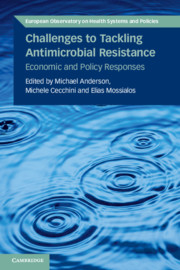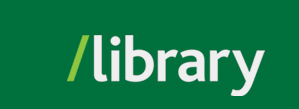|
Good soil is the start to good agriculture. For years, humans have studied how to best prepare soil for optimal crop output. Some beneficial management practices (BMP) that can improve the health of soil and are used on some Ontario farms include "cover crops, crop rotations, no-till, soil testing, conservation buffers, and organic amendments" (Shah, Weersink, & Vyn, 2022). In the 21st century, there is a need to balance meeting the demands of producing enough food by protecting crops from drought and pests, while ensuring we do not create pesticide resistant pests. Did you know "global pesticides use increased during the period 2000–2019 by 36 percent, to 4.2 million tonnes in 2019" (FAO. 2021).
Photo by Zoe Schaeffer on Unsplash |
|
Sources:
Open books may be 100% open or there may be chapters that are open. It is important to critically analyze open books and think about who or why the information is being shared in this format, before deciding to use it. For example, who are the authors/publisher and what else have they published? When was it published - is there more up-to-date information available? Is it for a Canadian, American, or international context? You may need to click "read online" or scroll to the bottom of the information page to see more details such as the description or table of contents. Some open books also have extra features such as activities, exercises, or videos.
Open books may be 100% open or there may be chapters that are open.

"The textbook provides supplementary materials that are specific to regions in Canada, or may be of specific interest beyond what might be considered introductory soil science material. " - Website. Shared under a CC BY-NC 4.0

"Nitrate Handbook: Environmental, Agricultural, and Health Effects provides an overview of the entire nitrate cycle and the processes influencing nitrate transformation. It clearly identifies the role of nitrate as an essential nutrient in plant growth, food preservation, and human health." - Publisher website. Only some chapters are available via Open Access.

"This book explains the concept of using phytotechnology with biomass production to improve soil quality and restore contaminated sites to a useful state that has economic and social value." - Publisher website. Shred under a CC BY-NC-ND

"By bringing together in one place the latest evidence and analysing the different facets of the complex problem of tackling AMR, this book offers an accessible summary for policy-makers, academics and students on the big questions around AMR policy. This title is available as Open Access on Cambridge Core."

" This book offers a more effective application of the Integrated Pest Management (IPM) approach, on an area-wide (AW) or population-wide (AW-IPM) basis, which aims at the management of the total population of a pest, involving a coordinated effort over often larger areas." - Taylor & Francis website. Shared under a CC BY-NC-ND license.

"The sterile insect technique (SIT) is an environment-friendly method of pest control that integrates well into area-wide integrated pest management (AW-IPM) programmes. This book takes a generic, thematic, comprehensive, and global approach in describing the principles and practice of the SIT." - Publisher website. Shared under a CC BY-NC-ND license.
You can find open access journals in online collections such as DOAJ or OAPEN. Alternatively, you can check out a publisher's website to see if they support open access options. Open journals may be entirely open or only certain articles may be available as open access.
Searching a website such as DOAJ can help you find reputable journals as untrustworthy journals exist. There are open journals known as predatory journals that will "prey" on unsuspecting academics trying to publish. They may engage in a number of dubious, academically illegitimate, or even unethical practices (e.g. charging exorbitant author-side fees or utilising inadequate or false peer review processes).
The provincial and federal governments are making some of their data open to be used and shared by researchers, educators, policy makers, and people working within the agriculture sector. Check out the links below for a sample of Canadian and international data.
When searching for books (print or electronic) and DVDs using the Library search, it is best to use keywords to search rather than sentences. Think of a keyword that describes the overarching topic you want to look for. It may be also helpful to think of synonyms for this term and try searching for those as well. When searching for books, you want to be specific but not granular about the topic (think about how a book may be described overall). You'll find some example keywords and searches below, can you think of others?
[Note: We are working to improve access to our collections and revising our subject headings to be more respectful and inclusive. Please be aware that you may see certain words or descriptions in search results or library materials which reflect the author’s attitude or that of the period in which the item was created and may now be considered offensive.]
DISCLAIMER: UFV print books are not open access or open educational resources because they are not free from copyright restrictions (so fair dealing rules still apply), however, they are free to access for UFV students, faculty, staff, and alumni. Community borrowers are also permitted to borrow print resources - for more information please see the 'Access to UFV Library Books' section on this page.
"Agricultural soil science is a sub discipline of soil science which studies the edaphic conditions related to the production of food. It provides a holistic understanding of soil and its relation to the ecosystem. Agricultural soil science helps in studying the chemical, biological and physical composition of soils, particularly in relation with agriculture." - Publisher
Improved drought tolerance, resistance to disease, and increased fruiting are just a few of the ways mycorrhizal fungi can enhance plant performance. Bestselling author Jeff Lowenfels clearly explains how beneficial fungi can make or break a plant's success, and how to best optimize the advantages. Applicable to all types of cultivation - from agriculture to horticulture and ornamental gardens to legal cannabis propagation - Teaming with Fungi reveals the key role mycorrhizal fungi play in growing successful plants.--COVER.
"Understanding Soils in Urban Environments explains how urban soils develop, change and erode. It describes their physical and chemical properties and focuses on specific soil problems, such as acid sulfate soils, that can cause environmental concern and also affect engineering works. It also addresses contemporary issues such as green roofs, urban green space and the man-made urban soils that plants may need to thrive in." Publisher's Description
"This edition of White's influential book presents the latest updates on these and other developments in soil management in vineyards. With a minimum of scientific jargon, Understanding Vineyard Soils explains the interaction between soils on a variety of parent materials around the world and grapevine growth and wine typicity."
"Learn a roadmap to healthy soil and revitalised food systems to powerfully address these times of challenge. This book equips producers with knowledge, skills and insights to regenerate ecosystem health and grow farm/ranch profits."
"Interpreting Soil Test Results is a practical reference enabling soil scientists, environmental scientists, environmental engineers, land holders and others involved in land management to better understand a range of soil test methods and interpret the results of these tests. It also contains a comprehensive description of the soil properties relevant to many environmental and natural land resource issues and investigations. "
"The Biopesticides Handbook details the benefits of biopesticides all along the food chain, offering a full spectrum and review of the range of organisms and organic products that may be used in the biological control of insects. Exploring not only the benefits but all aspects of biopesticides, the book discusses the uses and abuses of biopesticides that have been in circulation for more than 50 years, as well as more recent advances in this area." Publisher's description
"In Whitewash, veteran journalist Carey Gillam uncovers one of the most controversial stories in the history of food and agriculture, exposing new evidence of corporate influence. Gillam introduces readers to farm families devastated by cancers which they believe are caused by the chemical, and to scientists whose reputations have been smeared for publishing research that contradicted business interests." Dust jacket flap
UFV students, faculty, and alumni can borrow print UFV Library books. UFV Library also allows retired faculty and individuals from the B.C. community to sign out books after they have signed up for a community borrower card (there is a $5 one time fee). Please present your UFV ID card at the circulation desk. Limits will apply to alumni and community borrowers. For more information about borrowing materials, please see the links below:
Current UFV students, faculty, and staff have access to thousands of journals that the library subscribes to - for free! Some of the journals within our databases are open access, while others are not. UFV alumni can access library databases only when on-campus.
© , University of the Fraser Valley, 33844 King Road, Abbotsford, B.C., Canada V2S 7M8

